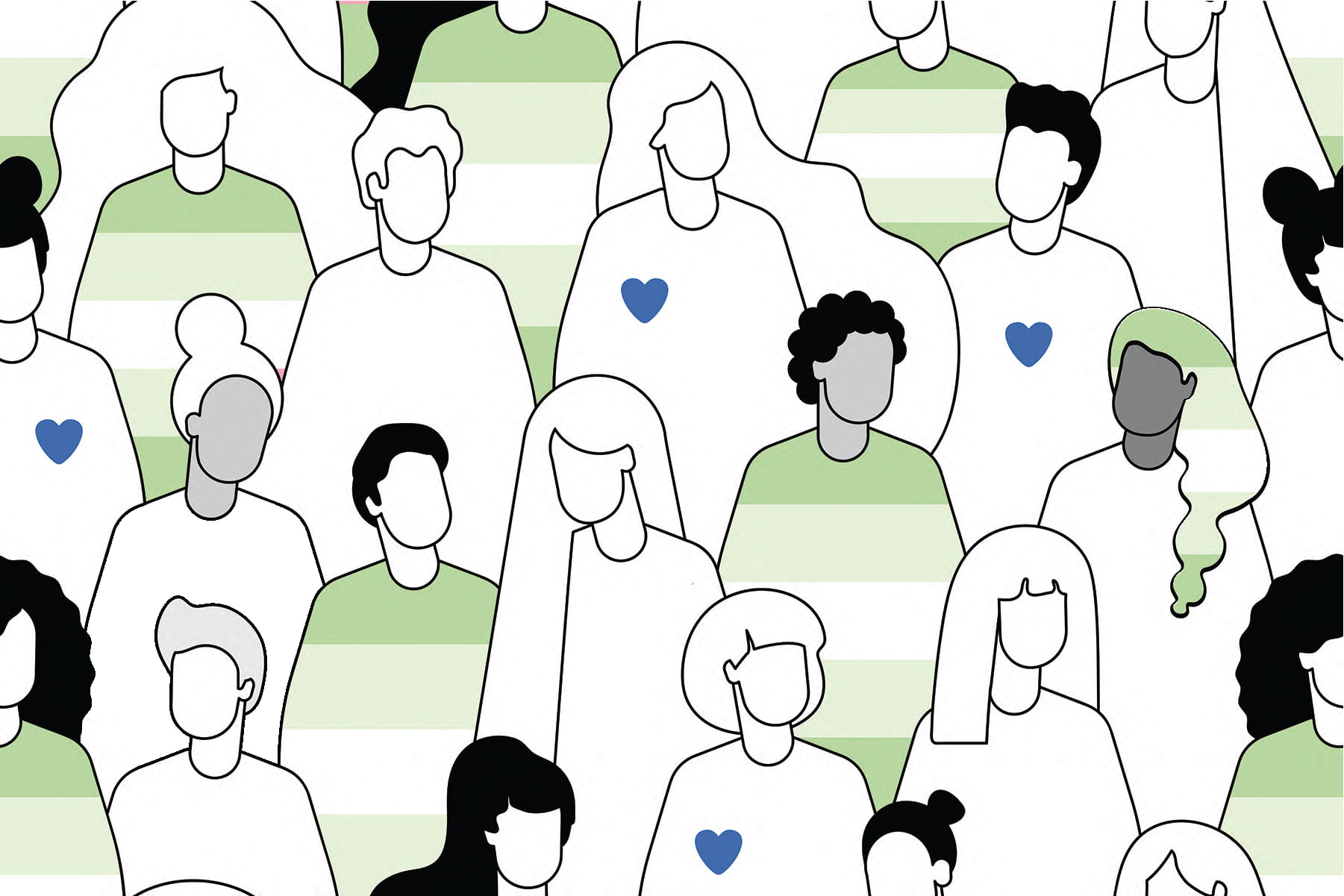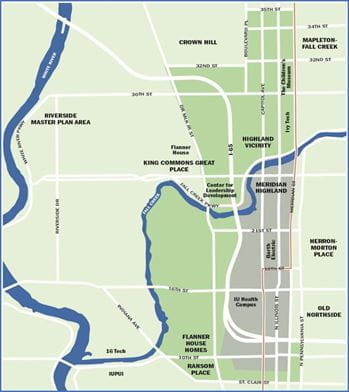
Being A Good Neighbor
With a new campus and a new hospital comes a collaborative effort to improve the health of people who live nearby.
Bobby King May 27, 2025
A GLEAMING NEW medical education and research building. A massive new hospital designed for next-generation acute care. An existing center for neuroscience discovery with few peers.
The impressive string of world-class medical, education and research facilities now aligning north of downtown Indianapolis is almost certain to change the face of health care in the city — and in central Indiana.
The larger question, however, may be whether these magnificent new assets can do anything to improve the health of the people living in the neighborhoods closest to the new medical campus.
People living in the Crown Hill, Ransom Place, Meridian Highland, the Historic Flanner House Homes, and Highland Vicinity neighborhoods have an average life expectancy in the mid-60s. Just 10 miles to the north, in Carmel, people can expect to live well into their 80s.
That disparity is about much more than health care. It’s about affordable housing, education, the ability to make a living wage, the lack of parks and walkable spaces, and access to healthy foods. To attempt to make a dent in the disparities, a coalition formed between the neighborhoods, IU Health, The Children’s Museum of Indianapolis, Citizens Energy Group, Ivy Tech Community College and Indiana University School of Medicine.

Their collaboration is called the Indy Health District, which also is the name given to the roughly 1,500-acre area that encompasses the neighborhoods and the campus that includes IU Health and IU School of Medicine facilities.
While the Indy Health District officially launched in October, the need for it has been apparent since plans began forming for the new IU Health hospital and IU School of Medicine building and, in fact, decades before that.
"As we began serious planning for [our new hospital] we were clear that our project needed to include bold, new thinking about how we engage our neighbors. It is our determination to transform the area around our campus,” IU Health President and CEO Dennis Murphy said at the district’s launch event. “If we only build a great hospital, we will have failed."
IU School of Medicine’s role in the project is still taking shape, said Neil Perdue, PhD, an executive associate dean at the school, a primary advisor to Dean Jay L. Hess and IU’s representative on the board of the Indy Health District. The school will join the other anchor institutions in addressing the needs of the surrounding communities.
Jamal Smith, executive director of the Indy Health District, Inc., said one of the most valuable assets the School of Medicine will bring to the table is its students. He could see students volunteering for mobile outreach clinics or health awareness efforts. “I think there will be a number of opportunities for School of Medicine students to engage with the community in a way that provides an ongoing, hands-on practicum but also provides things that are truly needed by the community.”
Smith said the residents of the Indy Health District face some obstacles to better health. There are no grocery stores within the neighborhoods. The high-speed traffic on the Capitol and Illinois streets affects the area’s walkability. There’s a need for more diversity of housing, including single-family and multi-family units, and affordable and market-rate housing.
Already, Smith said the Indy Health District has collaborated with other groups to establish a walking trail along Capitol Avenue, a 200-unit housing development, and an entity promoting health care workforce development.
Smith said the district and its anchors are still gathering information from local residents and forming their strategic plan. “The goal of the Indy Health District,” Smith said, “is to convene the anchor organizations and make sure they coalesce with the needs and the desires of the neighborhood and community – and to help them find the resources and the people to pull those things off.”